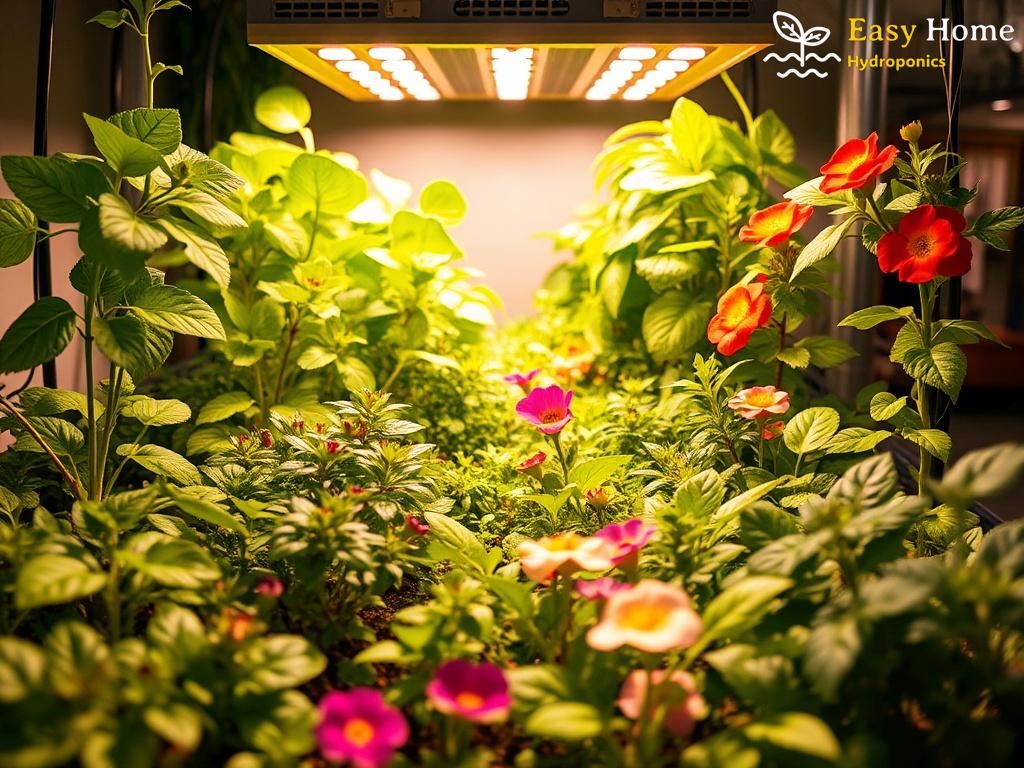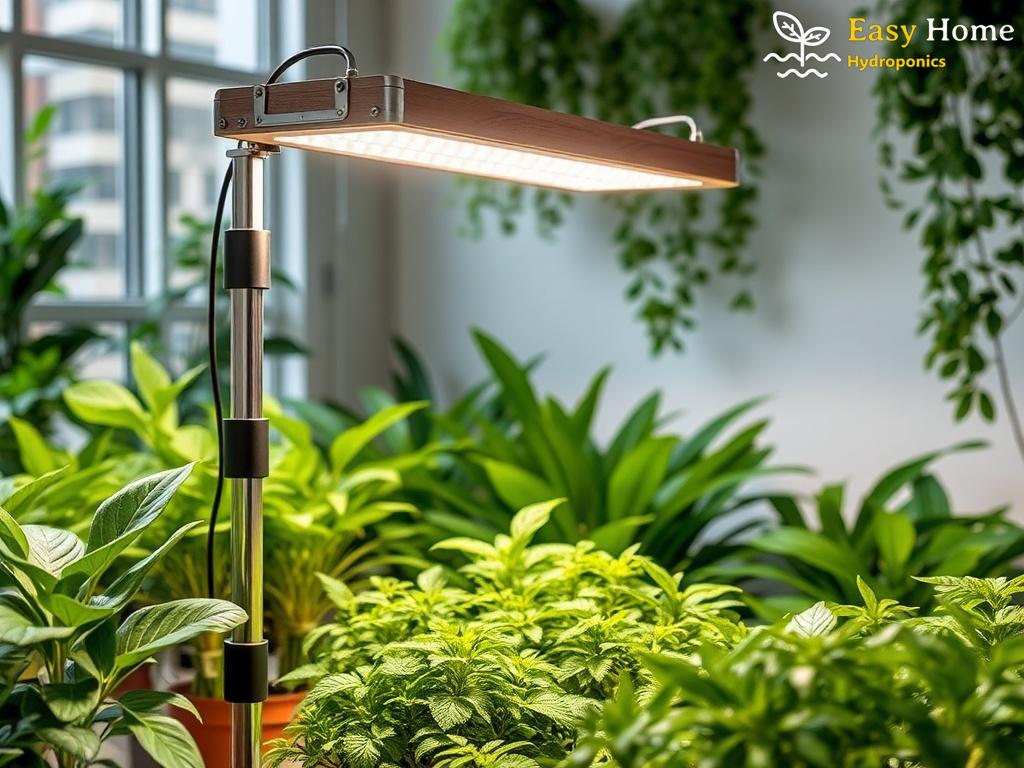Illuminating the Basics: Understanding Wattage
When diving into the world of hydroponics, one of the most crucial aspects to understand is wattage. Wattage isn’t just a number; it’s a significant factor that influences plant growth, energy consumption, and ultimately, the success of your hydroponic system. As you embark on your journey of indoor gardening, grasping the relationship between wattage and plant health will illuminate your path towards flourishing crops and vibrant yields.
Different plants have varying light needs, and understanding the right wattage can make all the difference in their growth patterns. Striking the perfect balance of light intensity can lead to robust growth and abundant harvests. Too little light can stunt growth, while excessive wattage can lead to burned leaves and wasted energy.
Here’s a quick comparison of wattage needs based on the type of plants:
| Plant Type | Recommended Wattage per Square Foot |
|---|---|
| Leafy Greens | 25-50 watts |
| Fruit-bearing Plants | 50-75 watts |
| Flowering Plants | 75-100 watts |
When it comes to selecting the right bulb for your hydroponic garden, considering wattage is just the beginning. Different types of bulbs emit varying spectrums of light, which can significantly affect plant growth. Factors such as energy efficiency, light spectrum, and heat production play vital roles in your selection process.
Take a look at this concise list to help you choose the best bulb type for your hydroponic garden:
- LED: Highly efficient, long-lasting, and low heat emission. Ideal for all growth stages.
- Fluorescent: Great for seedlings and vegetative growth. Moderate energy use.
- HID: High intensity and heat; excellent for flowering but requires careful temperature management.
By understanding the nuances of wattage and how it relates to different light sources, you can make informed decisions that will lead to thriving plants and a successful hydroponic experience.
Tailoring Light Intensity for Plant Growth Stages
When embarking on the exciting journey of hydroponics, understanding how to tailor light intensity based on the distinct growth stages of your plants is crucial. Each phase—from germination to flowering—demands a different approach to wattage and light quality. By adjusting the wattage according to the specific needs of your plants at each stage, you can create an environment that fosters optimal growth and bountiful yields. Let’s explore how to illuminate each phase effectively.
During the germination stage, seeds are delicate and require a gentle touch of light to trigger their growth. This is where low wattage bulbs come into play. Utilizing fluorescent bulbs with a wattage of around 25 watts per square foot ensures that seeds receive adequate light without the risk of overheating. The aim here is to provide a nurturing atmosphere that encourages sprouting while avoiding any stress that high-intensity light might cause. The right balance of light will help germinate seeds quickly and healthily, setting the foundation for prosperous growth.
As plants transition to the vegetative stage, their light requirements become more demanding. This is the time to ramp up the wattage to about 50-75 watts per square foot. Here, LED and fluorescent bulbs shine, offering the spectrum necessary for robust leaf development. The plants will thrive under this intensity as they build their foliage, with strong, leafy greens absorbing light efficiently. It’s essential to monitor the distance between the light source and the plants to prevent light burn, as the vigorous growth can make them more susceptible to excess heat and light.
Finally, we arrive at the flowering stage, where wattage needs peak at around 75-100 watts per square foot. This is the critical moment when plants require the highest intensity of light to produce vibrant flowers and fruits. HID bulbs, known for their high output, are perfect for this stage as they deliver the necessary energy to support flowering. However, it’s vital to manage heat levels effectively, ensuring that plants are not overwhelmed by the intensity. Providing the right wattage during this stage can mean the difference between a modest harvest and a spectacular yield.
In conclusion, by strategically adjusting wattage according to plant growth stages, hydroponic gardeners can create an ideal environment for their plants. Each phase has its unique requirements, and understanding these nuances will empower you to make informed decisions that lead to thriving crops.
Comparing LED vs. HPS: Which Wattage Wins?
When it comes to maximizing the potential of your hydroponic garden, the choice of lighting can make or break your crop’s success. Two prominent contenders in the lighting arena are LED (Light Emitting Diode) and HPS (High-Pressure Sodium) bulbs. Each type of bulb offers unique advantages and drawbacks, particularly when it comes to wattage and its impact on plant health and energy efficiency. Understanding the intricacies of these two lighting options can help you make a more informed decision that ultimately leads to a bountiful harvest.
In the battle of LED versus HPS, wattage efficiency stands out as a critical factor. LED lights are renowned for their ability to provide high levels of light output with significantly lower energy consumption. While a typical LED setup may require around 300 watts to effectively illuminate a growing area, it can produce light equivalent to a much higher wattage of HPS, often exceeding 600 watts. This means that with LEDs, you can achieve similar or even better results while using less power, ultimately reducing your electricity bills and carbon footprint.
Another important aspect to consider is the heat produced by these bulbs. HPS lights are notorious for generating substantial heat, which can be detrimental to your plants if not properly managed. Excessive heat can lead to issues such as leaf burn and stunted growth, forcing gardeners to invest in additional cooling systems to maintain optimal temperatures. In contrast, LEDs emit minimal heat, allowing you to place them closer to your plants without the risk of damage. This not only enhances light penetration but also promotes a more stable growth environment, making it an appealing option for those who want to keep their plants safe.
When evaluating your options, the lifespan of your lighting choice plays a significant role in the overall cost-effectiveness of your hydroponic system. LED lights boast an impressive lifespan, often lasting up to 50,000 hours or more, which means they can serve you well for years without needing replacement. On the other hand, HPS bulbs typically need to be replaced every 1,000 to 2,000 hours of use. While HPS lights may have a lower initial cost, the frequent replacements can add up, making LEDs a smarter long-term investment.
In conclusion, when weighing the wattage and overall benefits of LED and HPS lighting options, it becomes clear that LEDs not only offer superior energy efficiency and reduced heat output but also present a longer lifespan, ultimately allowing hydroponic gardeners to achieve thriving plants with less hassle. As you embark on your hydroponic journey, choosing the right lighting system will undoubtedly illuminate your path to success.
Maximizing Efficiency: Wattage for Space Constraints
In the realm of hydroponics, space is often at a premium. Whether you’re working with a small indoor garden, a vertical setup, or limited square footage, maximizing the efficiency of your lighting system is essential. This is where understanding wattage becomes crucial, as it directly impacts not only the health of your plants but also the overall energy consumption of your system. By selecting the right wattage that corresponds with your confined space, you can ensure that your plants receive the optimal light they need to thrive without wasting valuable resources.
When dealing with limited space, it’s vital to consider how different wattages can affect light intensity and distribution. In smaller gardens, the goal is to harness maximum light output while minimizing heat and energy costs. Here are some strategies to consider:
- LED Bulbs: For compact areas, LED lights are typically the go-to choice. They provide a high lumen output per watt, allowing you to use lower wattage bulbs (around 200-300 watts) to achieve similar results as higher wattage traditional bulbs. This efficiency leads to better growth without the bulk.
- Strategic Placement: Positioning your lights closer to the plants can enhance the effectiveness of lower wattage bulbs. Ensure that you’re monitoring the distance to prevent light burn, but with LEDs, this placement is generally safer due to their lower heat output.
- Supplemental Lighting: If your space can accommodate it, consider using a combination of different wattages. For instance, pairing a high wattage bulb for flowering stages with lower wattage options for vegetative growth can balance energy usage while meeting diverse plant needs.
Advancements in technology have also paved the way for more efficient lighting systems, particularly in constrained environments. Smart lighting solutions that adjust wattage based on plant needs can significantly enhance your hydroponics endeavor. These systems can optimize energy use while ensuring your plants receive the exact light they require at different growth stages. By investing in such technologies, you can transform your small garden into a powerhouse of productivity without compromising on quality.
Cost vs. Benefit: Finding Your Ideal Bulb Wattage
In the world of hydroponics, the decision on bulb wattage is not merely a matter of choosing a number; it’s about optimizing your investment for the best possible results. As you navigate through various lighting options, you’ll quickly realize that wattage plays a pivotal role in determining energy costs, plant health, and overall yield. The challenge lies in balancing these factors to find your ideal wattage without overspending or compromising plant growth.
When selecting bulbs for your hydroponic system, it’s essential to weigh the long-term benefits against the initial costs. Higher wattage bulbs may offer intense illumination, but they also come with higher energy consumption and potentially increased cooling costs. Conversely, low wattage options like LEDs can significantly reduce your energy bills while maintaining plant health. Here’s a closer look at the cost-benefit analysis:
| Bulb Type | Wattage Range | Initial Cost | Energy Efficiency | Lifespan |
|---|---|---|---|---|
| LED | 200-300 watts | Moderate | High | 50,000+ hours |
| Fluorescent | 25-75 watts | Low | Medium | 10,000 hours |
| HPS | 400-600 watts | Low | Medium | 1,000-2,000 hours |
This table illustrates the diverse options available, emphasizing how different wattages impact cost and efficiency.
Your ultimate goal is to cultivate thriving plants while keeping expenses manageable. To achieve this, consider the following strategies:
- Assess Plant Needs: Different plants have varying light requirements; understanding these can guide your wattage selection.
- Utilize Supplemental Lighting: Combine wattages for different growth stages to maximize efficiency and minimize costs.
- Monitor Performance: Regularly evaluate how your plants respond to light intensity to adjust wattage as needed.
By harnessing these strategies and being mindful of the cost versus benefit of wattage choices, hydroponic enthusiasts can create an optimal growing environment that not only sustains plant health but also respects budgetary constraints.




